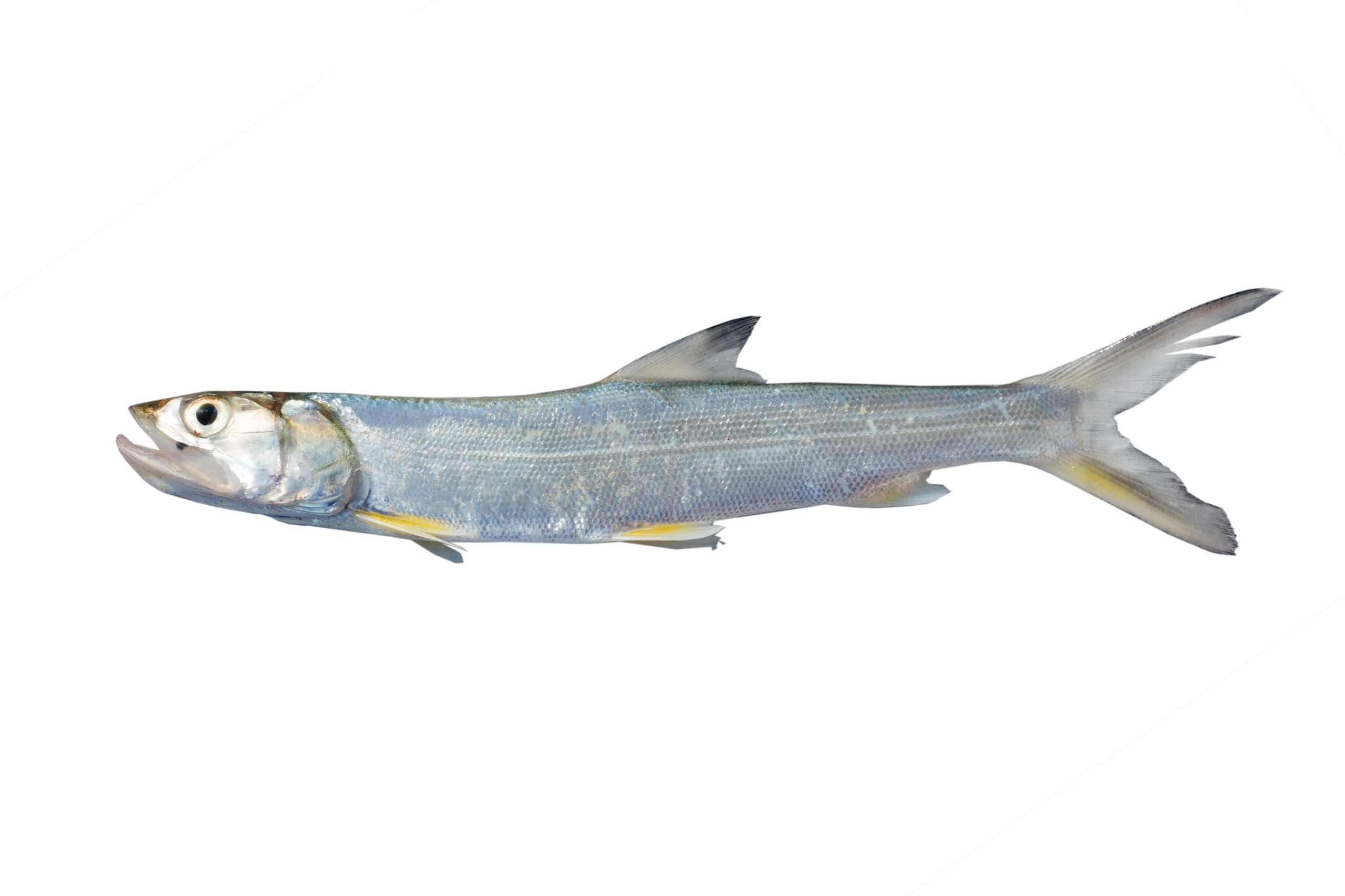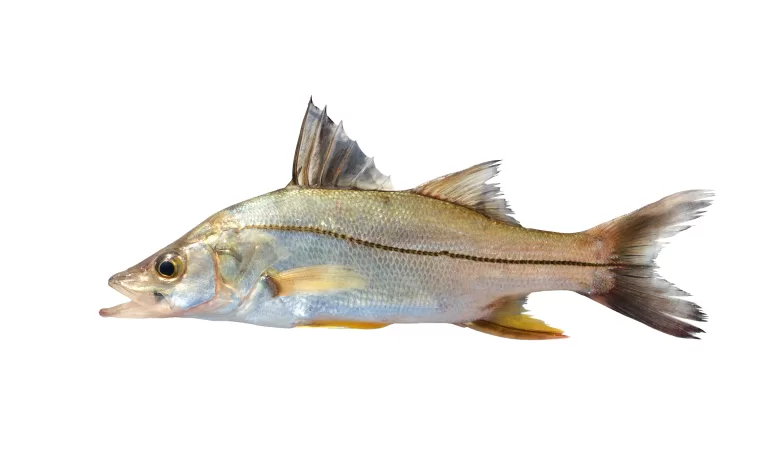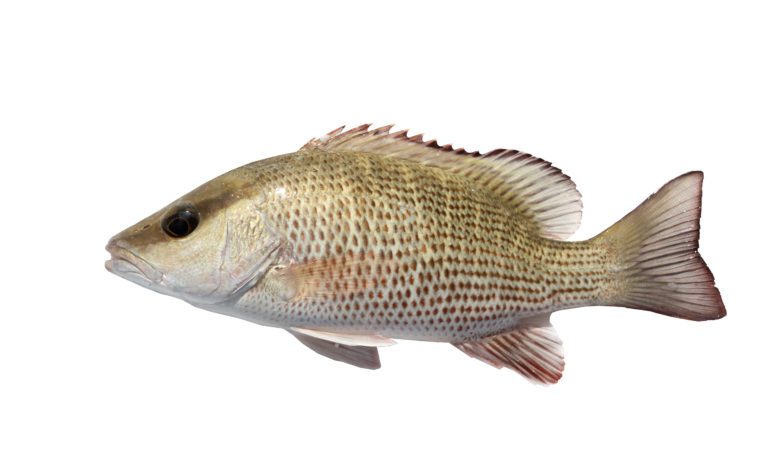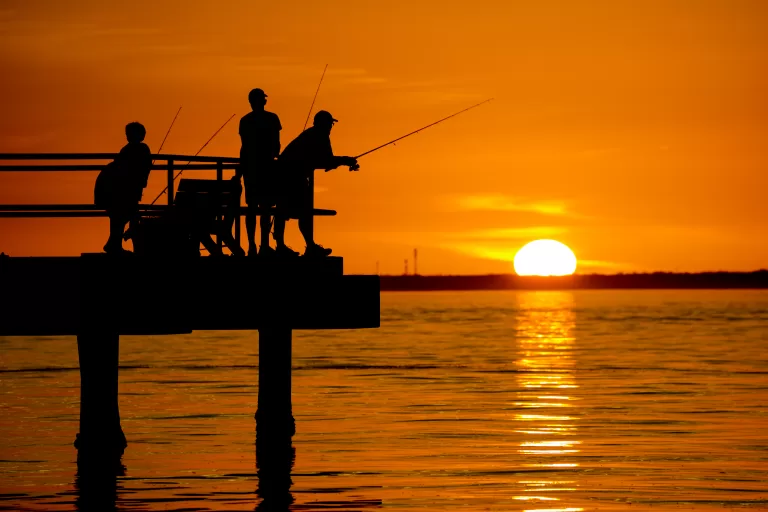Ultimate Guide to Fishing for Ladyfish in Florida: Tips and Techniques for Successful Catch
Picture this. You’re standing on the sandy shores of the Florida coast, the sun just starting to peak over the horizon as you cast your line into the surf. There’s a tug, a splash, and there it is – a shiny, silver ladyfish or ‘poor man’s tarpon,’ leaping and dancing on the end of your line. Talk about a fun and exhilarating start to the day! But how do you get to this moment? That’s what we’re here to talk about.
Key Takeaways
- Ladyfish provide an exciting fishing experience with their abundance and acrobatic displays.
- Use various techniques to catch ladyfish, including fly fishing, surf fishing & bait casting with lures or live/cut bait.
- Improve your chances of success by reading the water for signs of fish, handling them carefully when caught and learning from local anglers!
Ladyfish in Florida: What You Need to Know

The ladyfish, or the ‘poor man’s tarpon’ (named for their similar fighting style), is an alluring species that attracts many fishermen. It boasts an athletic, long tube shape with a shimmering silver hue of small scales and a large mouth for its size. From their mind-blowing flips over the water surface upon getting hooked to putting on spectacular acrobatic shows when reeled in, these fish are a boat load of fun! It’s understandable why Florida is such a prime location for catching ladyfish thanks to its subtropical waters, which are ideal habitats for these incredible fish. Ladyfish are smaller fish and can offer a great fishing experience for many anglers of different skill levels.
Appearance and Identification
Fish enthusiasts looking for a ladyfish should recognize its silver-colored slim frame, blueish green back and elongated dorsal ray. Ladyfish are small and typically only reach 1 to 2 pounds. Ladyfish that weigh 3 to 4 pounds are considered very large and rare. The world record is 6 pounds. Beware, the large, raspy mouth has tiny, sharp teeth. Anglers will experience an exciting challenge keeping them hooked when they reel it in!
Habitat and Distribution
For anglers looking for a show, ladyfish are found in tropical and subtropical waters; typically, they inhabit coastal estuaries, and bays throughout Florida and many other warm inland waters worldwide. This fish also lives at depths of up to 160 feet. Besides these areas, they are often seen near shorelines or streams along with hypersaline lagoons full of their favorite meal, small fish! Ladyfish make an excellent catch no matter what time of year due to their wide geographical range and love for shallower water habitats where smaller prey congregate.
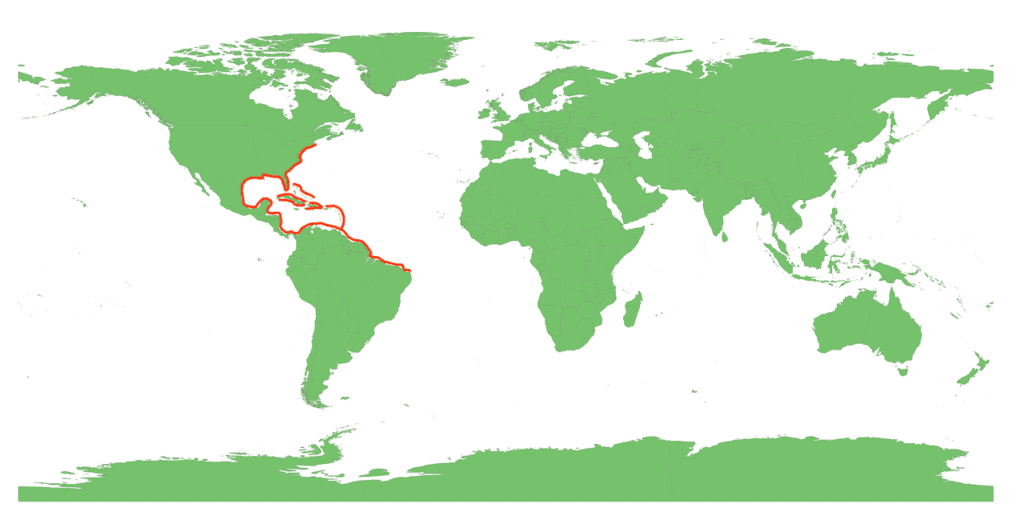
Techniques for Catching Ladyfish
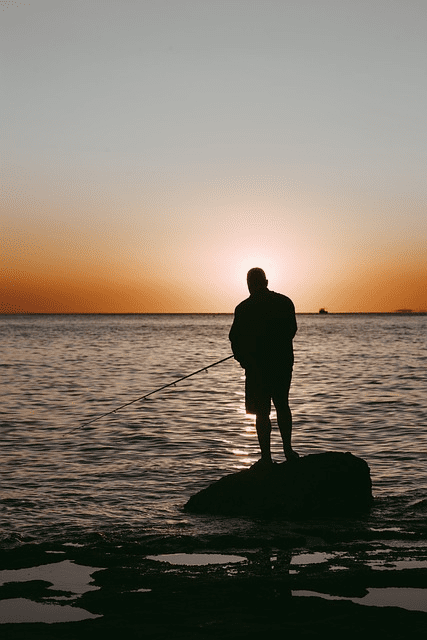
We are now familiar with ladyfish and how they inhabit various areas, so let’s consider the best ways to catch these lively fish. One can choose from multiple techniques when trying their hand at reeling in a female piscatorial acrobat (my weak attempt at a joke), such as fly fishing or surf casting and employing lures like plugs and spoons for optimal success.
Regarding bait fishing, live offerings, including menhaden, silversides, crustaceans, invertebrates, and smaller bony fish, will do the trick. Alternatively, using cut bait along with jigs is particularly beneficial in deeper waters due to its single hook, making handling more accessible and increasing safety for larger fish. Shrimp imitation lures function well too, making this approach not only efficient but also ethically friendly toward our beloved aquatic friends!
Fly Fishing
For anglers fly fishing for ladyfish, they need to be equipped with the proper tools. A 6wt fast-action rod and shiny silver or white flies like Deceivers with flashabou/Mylar are essential if you’re targeting these species of fish. An upgrade in weight may be necessary when it comes to larger flies as well as handling larger ladyfish. Try a 7wt or 8wt setup instead. Adding an intermediate sink tip line can help get your bait down deep into the water faster than usual, which is great news for fishermen seeking this type of catch! The Clouser Minnow’s weighted design makes it easy to swiftly retrieve, while its resemblance to small baitfish often lures them in quickly, making it an ideal choice amongst many experienced anglers. Fly fishing for ladyfish is one of the most exciting ways to target this species.
Beach/Surf Fishing
The beaches of Florida provide a scenic experience when it comes to fishing for ladyfish in the surf; there is nothing like the thrill of casting your line out on a beautiful beach day and waiting for a bite. Some good lures are GOT-CHA and D.O.A.C.A.L. jerk baits or natural bait such as shrimp, live finger mullet, all make ideal choices when surf fishing! Necessary equipment consists of a light/medium action spinning rod with medium capacity reel & strong monofilament/braided lines combined with a 2/0 circle hook and pyramid sinkers (or egg ones) and a fluorocarbon line as a leader. Whether you’re fishing on Florida’s gulf coast or the Atlantic side, having a basic setup will suffice perfectly. Keep an eye on waves, too, since they can determine how well ladyfish feed due to water clarity and the shape of the beach being affected by them both together.
Still Fishing
Still fishing is one method that can prove effective for catching ladyfish. To lure them in, use live bait like shrimp or menhaden and silversides, hooking these through their lips or back to imitate a living creature. Using glass minnows around well-lit piers at night can be an effective bait to fish with.
Cut pieces of squid or pinfish will also work as an attractive cut bait for the fish to eat, so simply make those into small parts then thread on your line to set up shop! Finally, once you have all your necessary materials ready, it’s time to cast off and hopefully land yourself some tasty catches while practicing responsible angling techniques!
Essential Gear for Ladyfish Fishing in Florida

When trying to catch ladyfish, you should ensure your fishing gear is appropriate. Some great choices for rods are the TFO Pro 7′ 0′′ Medium Light (PRO S 702-1) and the Ugly Stik Elite Spinning Rod 7′ 0′′ Medium-Light. Regarding reels, Daiwa Fuego 2500 or 1000 works well with this kind of fish. Jigs, silver spoons and plugs all serve as excellent lures and baits, while live shrimp can be a good option too! Don’t forget about hooks: size 2/0 circle hooks have been proven effective for catching ladyfish since they cause minimal damage whilst providing an adequate grip on them during capture moments.
Rods and Reels
Selecting the right rod and reel combination is essential when trying to catch ladyfish. A 7’ medium-light fast action rod allows you to cast lures with lighter lines, which are usually necessary for open-water fishing. The tip for these types of rods is typically very sensitive, so bites can be detected quickly, and powerful hook sets can be performed swiftly.
For a reel, a 2500 series balances line capacity and weight perfectly. It’s ideal for light or moderate tasks when catching these active fish – plus, its drag system provides smooth control over your battle while remaining small enough that using it isn’t an issue after longer periods!
Lures and Artificial Bait
Luring ladyfish requires the right kind of lures. Baits like D.O.A.C.A.L jerk baits and GOT-CHA lures are very popular choices for this purpose because they mimic injured or panicked prey fish, which draws in these predators easily when cast near sandbars and troughs along a shoreslines surf line with fast retrieval speeds. All-white pompano jigs can be highly effective too if reeled quickly enough as well as white or silver soft plastic bodies rigged onto weighted jigheads to match that of nearby baitfish colors also adding an enticing shimmering action underwater, surely making them bite! Remember: vary your movements & speed according to how you wish it to look as wounded/panicked food source, stay close to sea floor undulations such as sandy shelves, mirror local species’ coloring through choice of lure by obtaining ones akin to fishes found nearby.
Hooks, Lines, and Leaders
When it comes to catching ladyfish, circle hooks are the best choice when picking out equipment. For line, 10 pound clear mono would be suitable for these fish since they can’t easily detect its presence underwater. Using fluorocarbon leader material is suggested because of how nearly invisible it is underwater, making detection more difficult and increasing your chance of landing that prize catch!
These tackle recommendations can also be used for fishing similar-sized species like spanish mackerel and speckled trout.
Best Times and Locations for Ladyfish Fishing in Florida
Fishing for ladyfish in Florida can be particularly successful if you are aware of prime times and places. late May through summer is the best time to fish for ladyfish in the mid and northern parts of the state, in the winter months ladyfish are found further south where the waters are warmer. Early morning hours tend to offer more luck when it comes to catching these fish. Ladyfish populate rivers & creek mouths, so anglers who use baits on bottom or cast topwater plugs will likely experience good catches!
Seasonal Patterns
Ladyfish fishing is a popular activity, and the availability of these fish can depend on seasonal patterns. Typically, their season starts as temperatures warm up in the spring months. The population increases during late winter/springtime when large numbers are present due to high water levels associated with heavy rains, increasing their populations further. Ladyfish prefer warmer waters where they become more active, making it easier to catch some specimens, though beware that this could be influenced by other environmental changes along the way!
Hotspots for Ladyfish Fishing
For anglers looking for a paradise, the coastal regions of Florida are great spots to find ladyfish. Locations such as Pensacola, Destin, Siesta Key and Islamorada all offer areas teeming with this fish along with spanish mackerel and other species. For those seeking some fishing action, particular places like Sarasota to Fort Myers on the Gulf Coast or St George Island make wonderful destinations due to their abundance of these creatures.
One particularly good spot is Pensacola, which offers warm inshore waters close by that draw plenty of ladyfish — plus, there’s no shortage of charters geared towards taking fishermen out specifically after them! The nearby Destin Bridge also holds promise for catching lots. Try Norriego Point West Jetties and Bayous if you want more reliable catches.
Tips for a Successful Ladyfish Catch

Catching ladyfish is an art that requires practice and knowledge to master. Here are some valuable tips which will aid you in mastering your catch of this species:
- Reading the waters.
- Understanding how to hold them correctly.
- Getting advice from local experts.
With these helpful tips, you’ll soon be catching more ladyfish than ever!
Reading the Water
Being able to understand what the water is telling you is an essential part of fishing. If there are circling birds, baitfish popping, mangroves and oyster bars close by, it could mean that ladyfish may be present as well. Waters suddenly dropping into the depths often signify a school of small fish which attracts predators like ladyfish looking for their dinner. This can be detected if you see a sharp contrast between a lighter blue water on the inshore and then a sudden darker blue. Schools of bait give off signs of possible locations where these fish might linger near while hiding from attackers in areas with vegetation such as mangrove swamps or rocky edges filled with oysters and other marine life offering protection making them ideal spots for anglers searching after this type of catch.
Handling Ladyfish
It is important to use the right technique when handling a ladyfish that has been successfully hooked. A landing net or wet hands should be used to protect its slime layer and then hold it horizontally without squeezing too much. If there are hooks present in the fish, pliers or dehooking tools may be used for removal. If deeply embedded into the fish’s body, it might be best just to cut off the line itself. In any case, care must always be taken not to put back quickly so as not to leave an exhausted state of shock on release from fishing activity.
For maximum success rate with this species of fish during your next catch-and-release campaign, ensure correct hook management techniques while you handle them all along their journey out of the water and hopefully onto freedom!
Learning from Locals
Anglers in Florida have earned plenty of experience and insight through years spent on its waters. Local fishing pros can offer invaluable advice to increase your odds of getting a good catch – they are well-versed in the best methods, bait, and locations. Taking this knowledge into account while out fishing could mean all the difference!
If you ever encounter another angler when going about it yourself, don’t be shy about striking up some conversation. Who knows what valuable insights may come from that exchange?
Summary
Heading out to the Florida coast in pursuit of catching ladyfish is an adventure that all anglers should experience. From recognizing their distinctive silver-coloured bodies and understanding where they live, to knowing when best to capture them and having handy advice from those familiar with local waters – you have everything you need for a successful fishing trip. So make sure your rod is ready, as these fish are prepared for battle!
Frequently Asked Questions
What is a ladyfish?
The species of fish belonging to the Elopidae family, commonly referred to as ladyfish or Elops saurus, are widely found in Florida’s marine environment.
Why is it called a ladyfish?
The skipjack is known as a ladyfish because of its behavior near the surface, which includes jumping and gliding.
What is the legal size for ladyfish in Florida?
No particular size is set for ladyfish. Nevertheless, the total weight taken cannot exceed 100 pounds.
Are Ladyfish Good as Bait?
Ladyfish are renowned as excellent bait and a great choice for catching sharks and larger fish in deeper water. Ladyfish can be likened to mullet in this regard. Whether living or dead, they have tremendous value as bait or chumming material.

